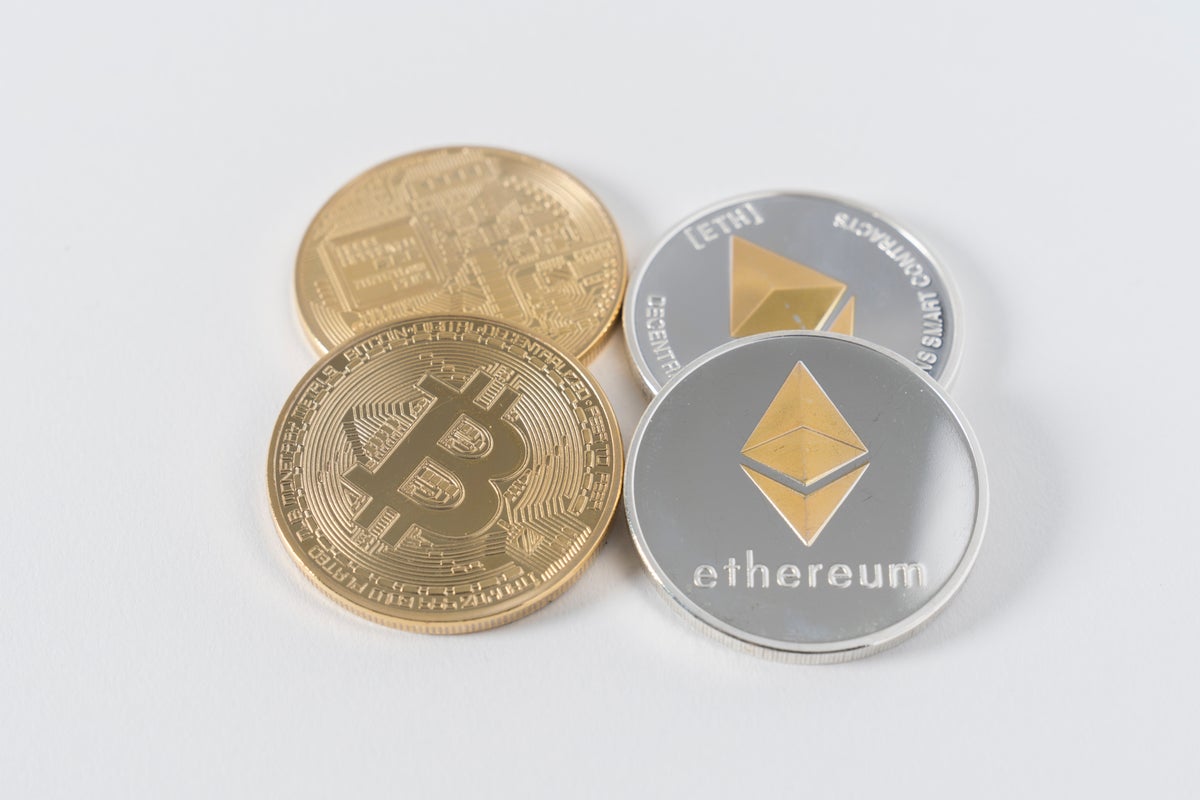[ad_1]
Happy Friday Everyone! 👋
The Merge is complete (more on that below) and despite Ethereum ETH/USD prices dropping the second-biggest crypto has been slowly stealing market share from big brother Bitcoin BTC/USD.
Back in June, Bitcoin’s dominance of the crypto market was at 47.5% while Ethereum’s share was 16%.
Fast-forward to today and that margin has narrowed with Ethereum controlling 20.5% of the market compared to Bitcoin’s 39.1%.
We’re not saying the Flippening is underway, but if it was it would look a lot like this.
Having said that…let’s get to it!
-
Ethereum transitions to Proof-of-Stake
-
Coffee & NFTs
-
Wave of institutional adoption
Cambiar a la suscripción paga
1. Ethereum transitions to Proof-of-Stake
And we finalized!
Happy merge all. This is a big moment for the Ethereum ecosystem. Everyone who helped make the merge happen should feel very proud today.
— vitalik.eth (@VitalikButerin) September 15, 2022
Around 3 am EST this morning, Ethereum developers confirmed that new blocks (now called slots on PoS) were being produced and finalized.
Translation: Merge successful.
The Merge is the culmination of 7years of work and its completion will drop the new supply issuance of Ether by 90% (or the equivalent of three Bitcoin halvings).
Though gas fees and transaction costs remain unchanged for now, the Ethereum network will be consuming 1/1000th of the energy it previously required (that’s an energy reduction of 99.95%!).
Another big change that comes with the transition is how ETH is created.
Where before it was mined, new ETH will now be generated by validators who pledge large amounts of pre-existing ETH.
Bitcoin may be the face of crypto, but Ethereum is the backbone of DeFi, NFTs, DAOs, Layer 2’s, and so on with 3,500 active dapps (decentralized apps).
This is a big deal.
2. Coffee & NFTs
We just called Ethereum the backbone of, well, everything.
The Polygon blockchain—a scaling solution that avoids high costs and low transaction speeds caused by congestion—sits atop the Ethereum network.
The Polygon blockchain is also where, over the past 6 months, Starbucks SBUX has built new technology to enhance its already massively successful Starbucks Rewards program.
“Starbucks Odyssey” will allow customers to purchase digital collectible NFTs that offer points, rewards, benefits, and immersive experiences.
To make the new loyalty program as accessible as possible, the coffee-serving giant is going out of its way to remove traces of crypto and web3 lingo, opting to use the term “journey stamps” rather than NFTs (what they really are).
Regardless of what they call it, Starbucks’ adoption of NFTs further validates the digital asset’s real-world applications and is reflective of continued institutional willingness to adopt the blockchain throughout the Crypto Winter.
3. Wave of institutional adoption
Speaking of institutional adoption, this week saw several legacy Wall Street firms making moves in the space.
The Chicago Mercantile Exchange (CME)—which already offers Ether futures—launched Ether options this week in response to surging interest for derivatives on the second largest crypto.
Private equity giant KKR is leveraging the public blockchain to make one of its funds available for investment. The company will tokenize an iteration of its Health Care Strategic Fund which will be tradeable on the Avalanche blockchain.
Fidelity—home to over 34 million brokerage accounts—is considering making Bitcoin trading available on its brokerage platform. The firm already allowed corporate clients to add Bitcoin to 401(k) plans earlier this year.
And finally, the same Fidelity, Charles Schwab, Citadel Securities, and other Wall Street firms are teaming up to launch a crypto exchange: EDX Markets.
The exchange will aim to serve both institutional and individual investors.
The wave is coming—which side you’re on it up to you.
[ad_2]
Image and article originally from www.benzinga.com. Read the original article here.

